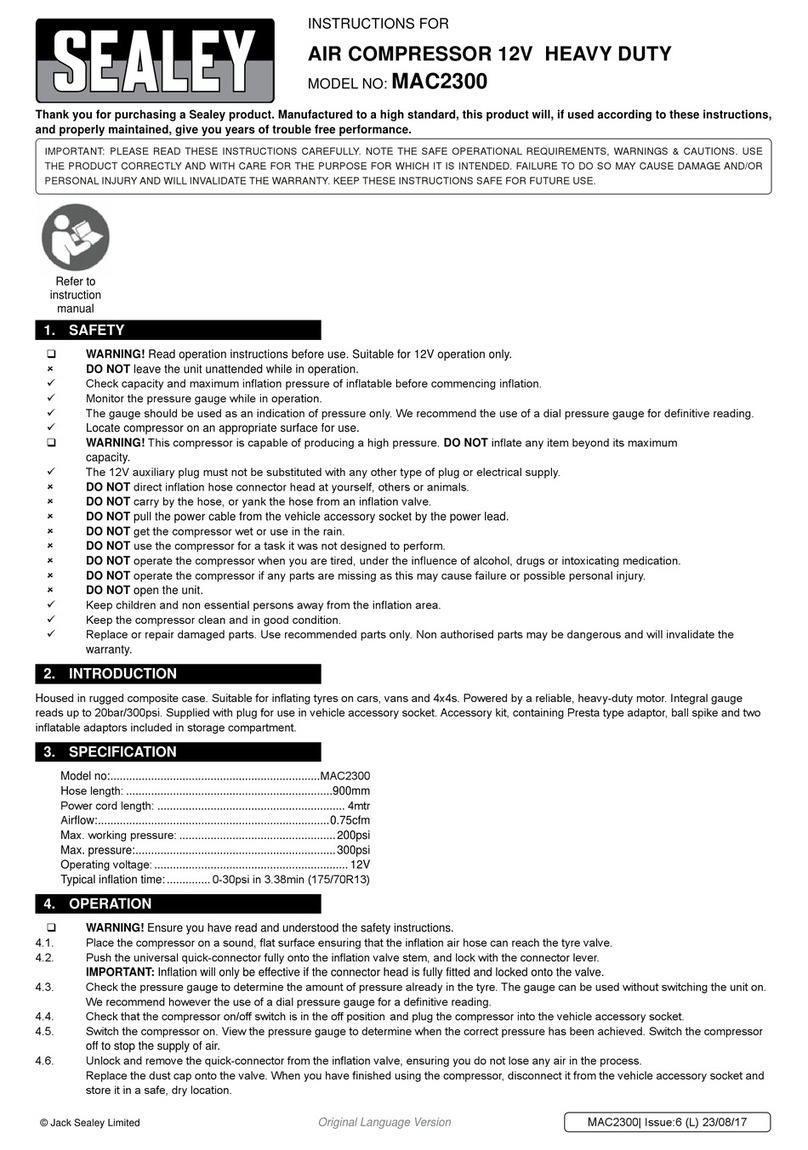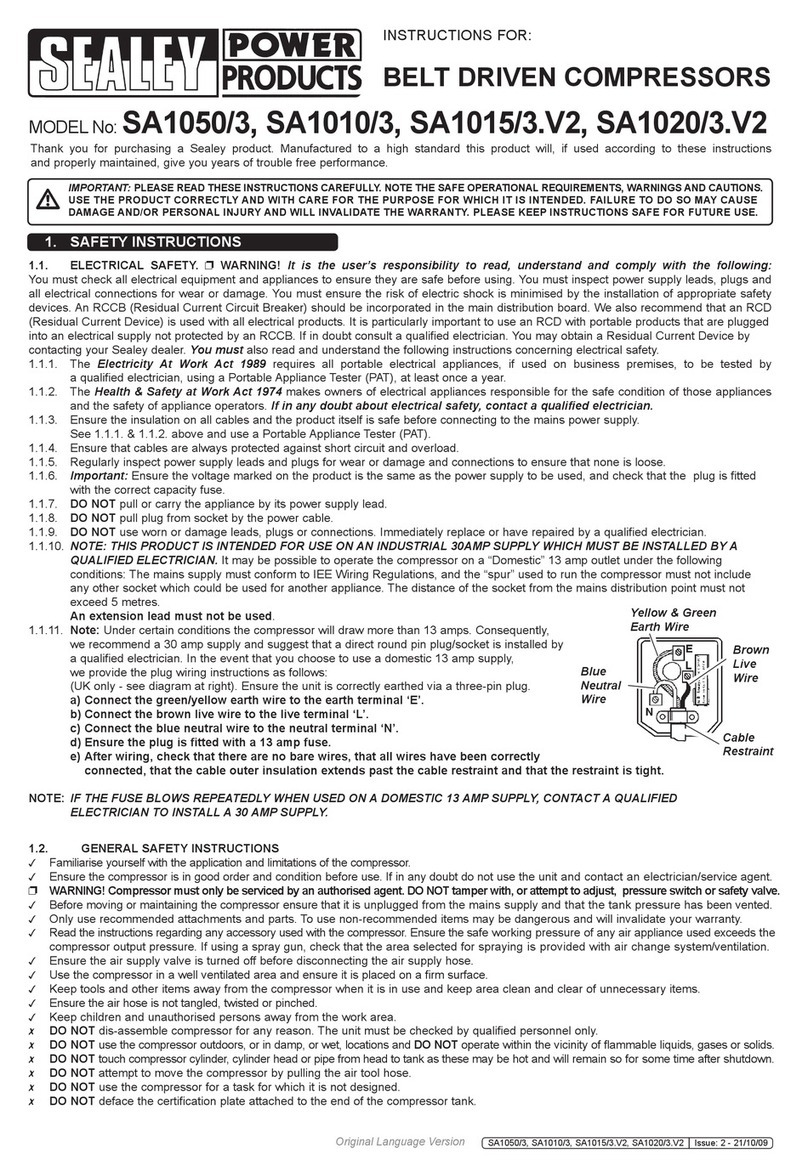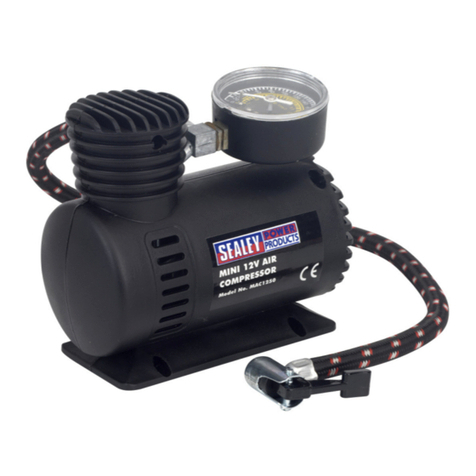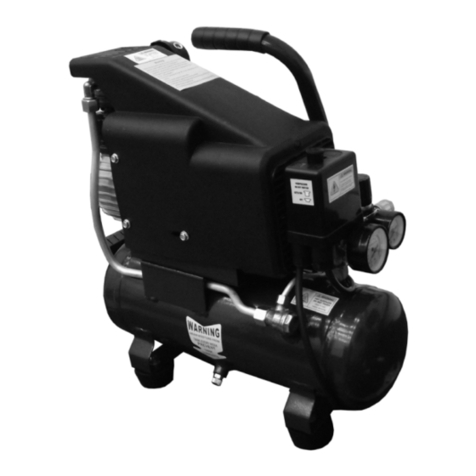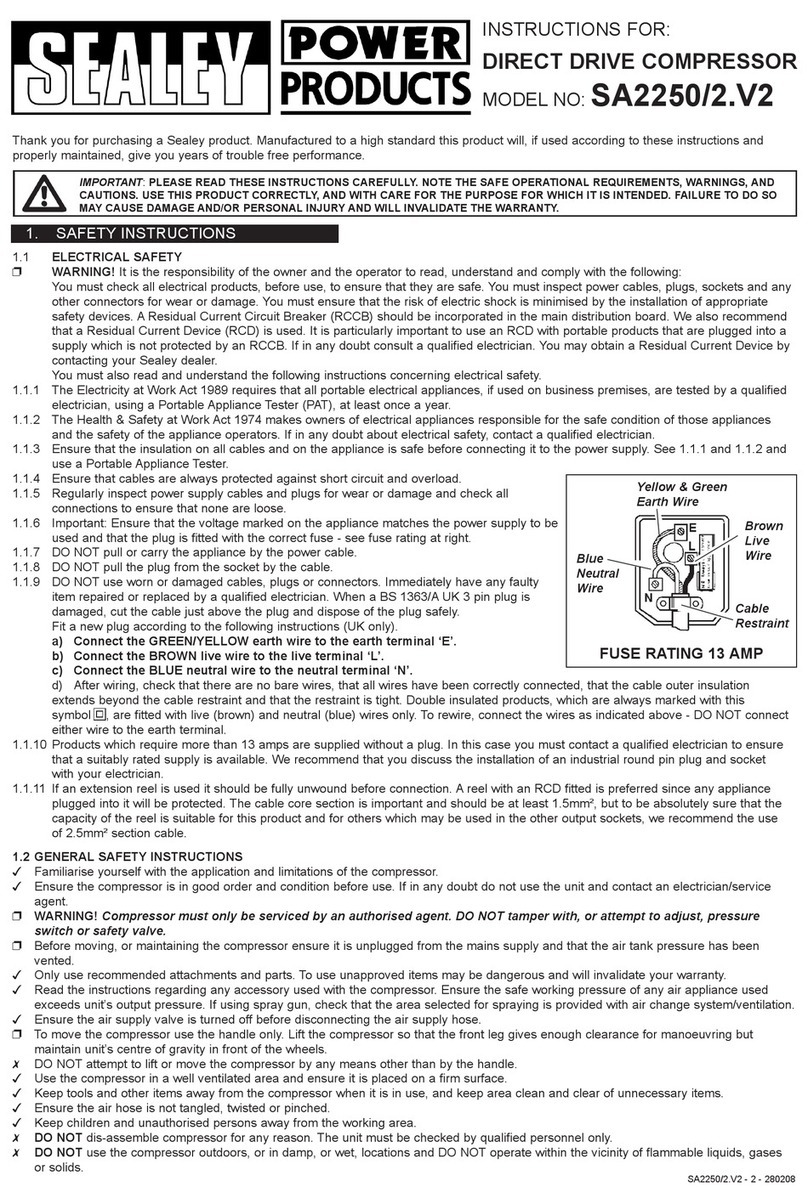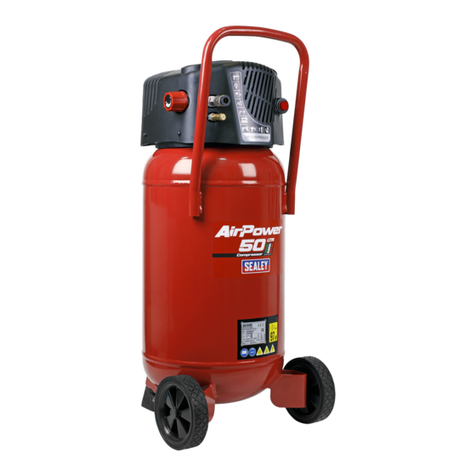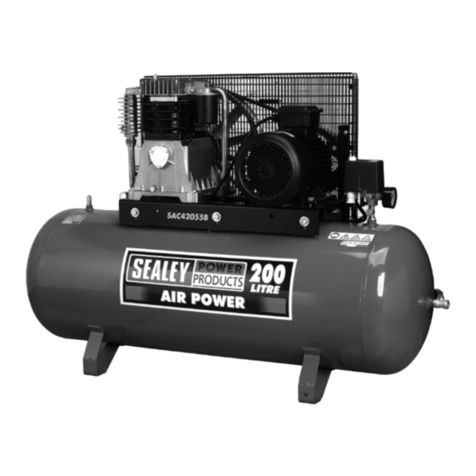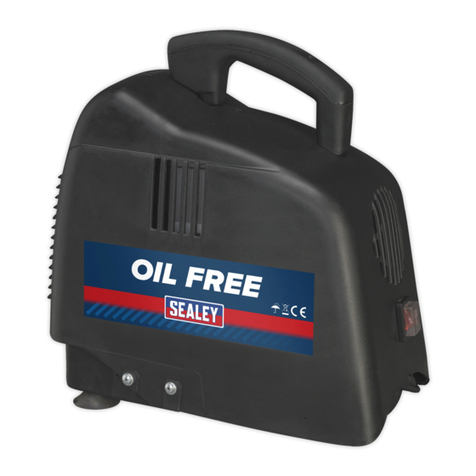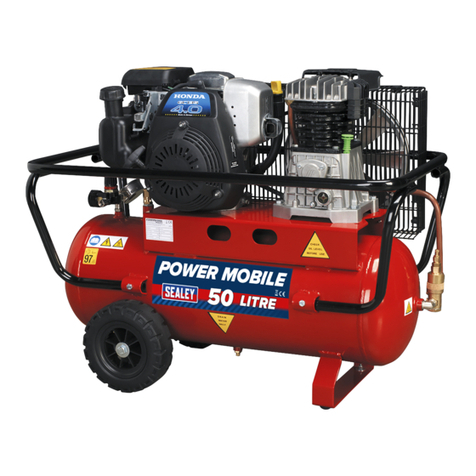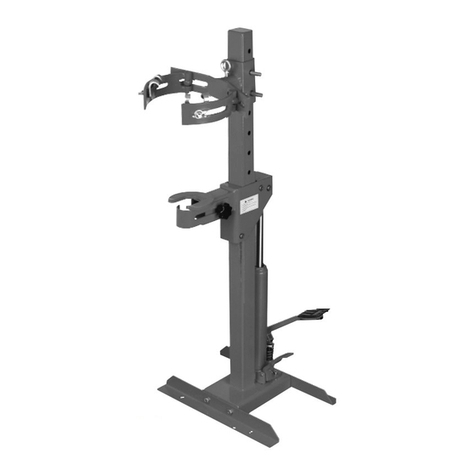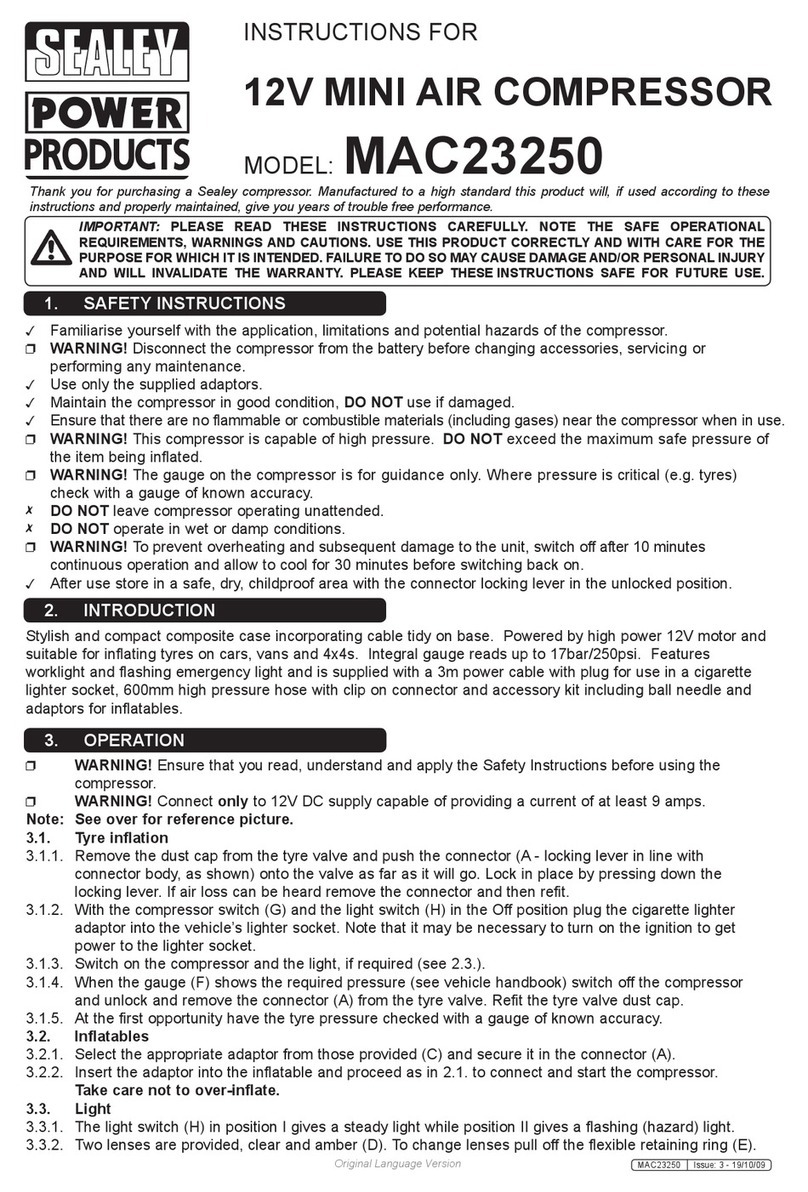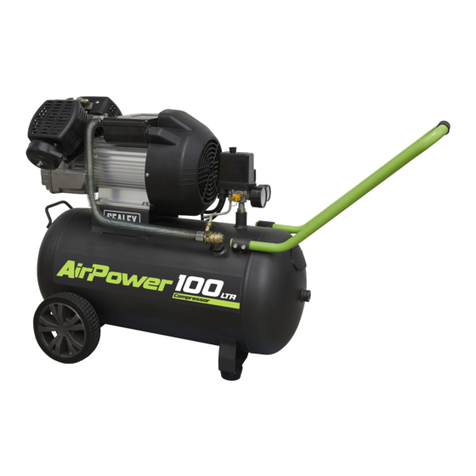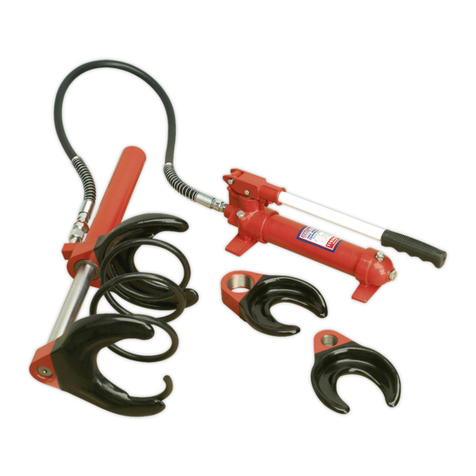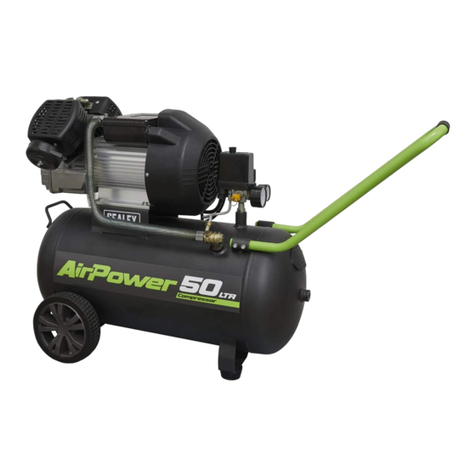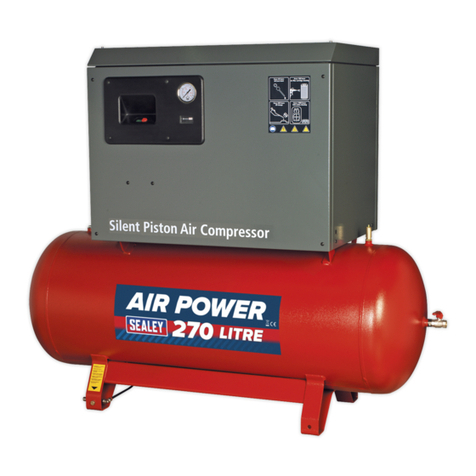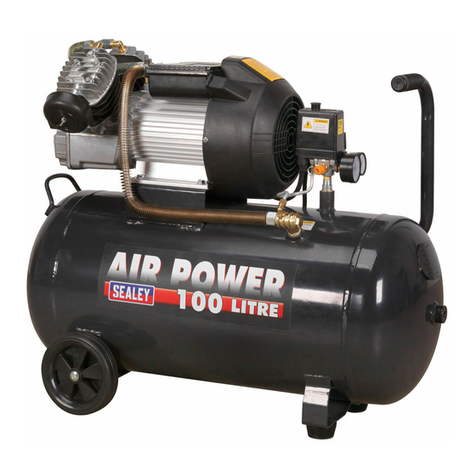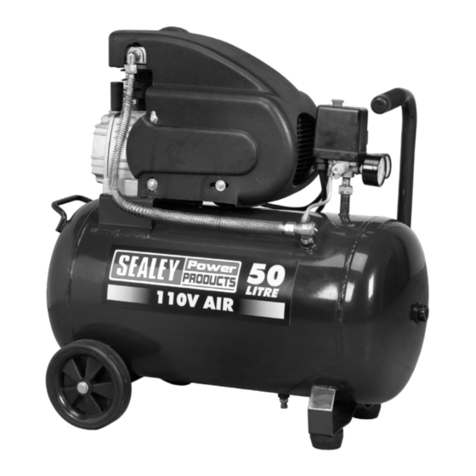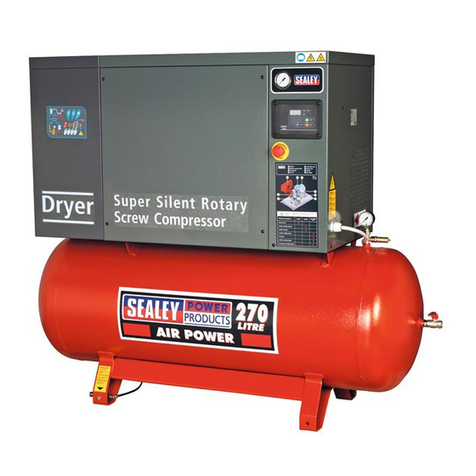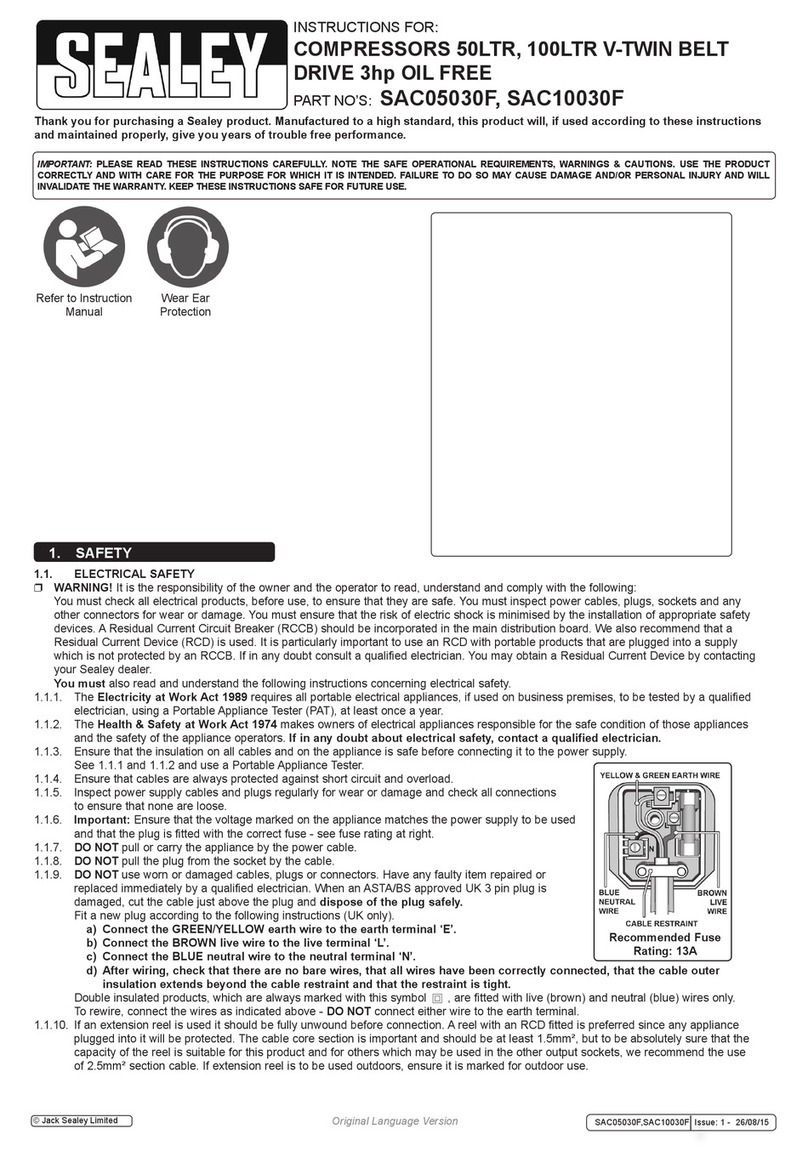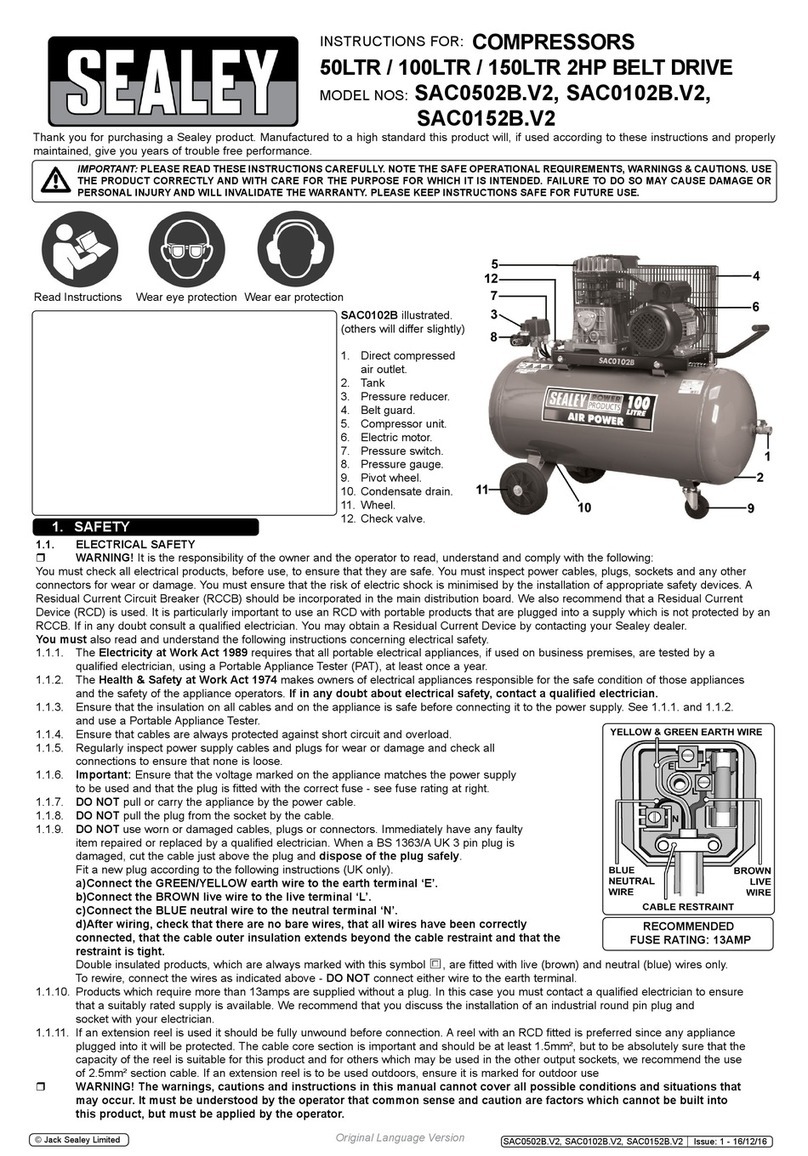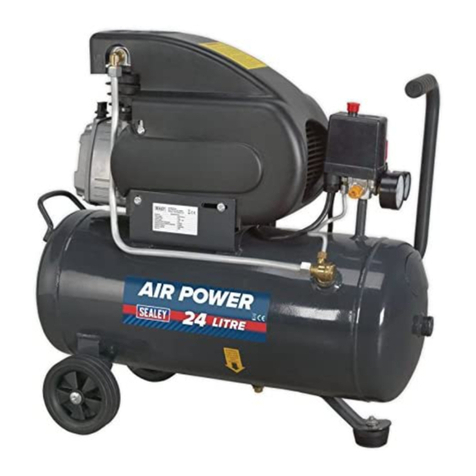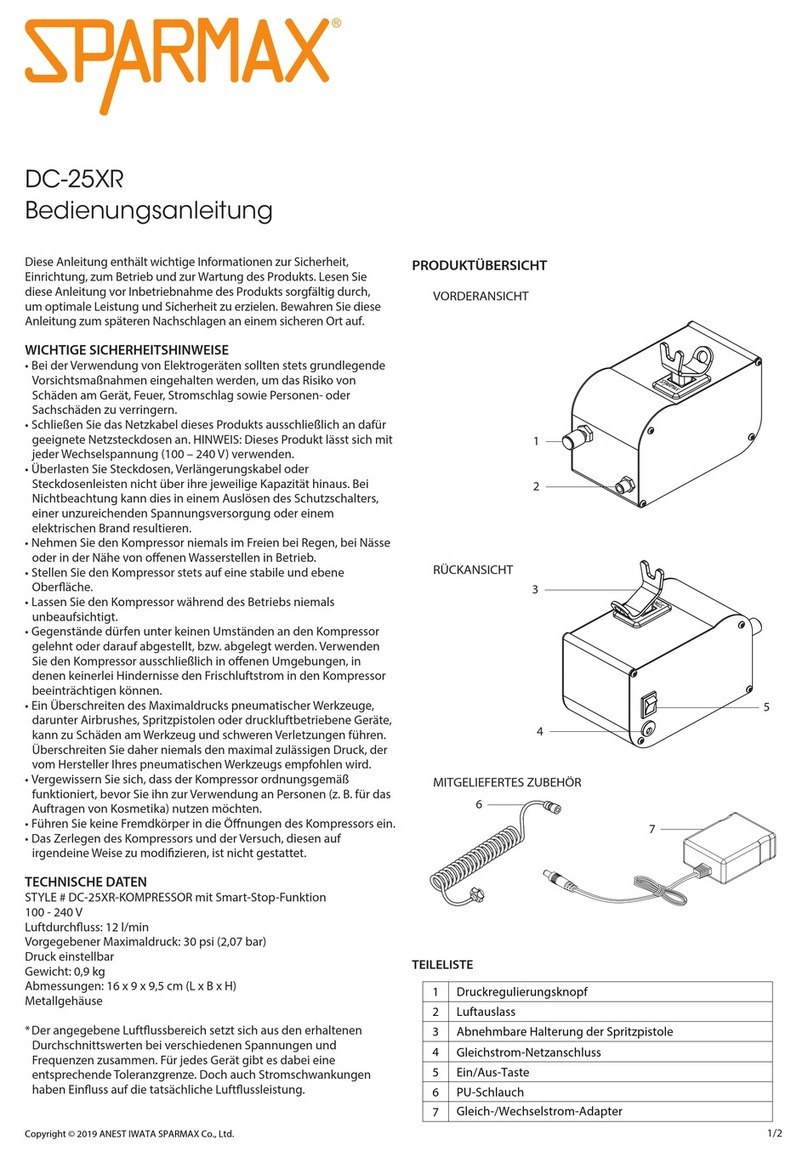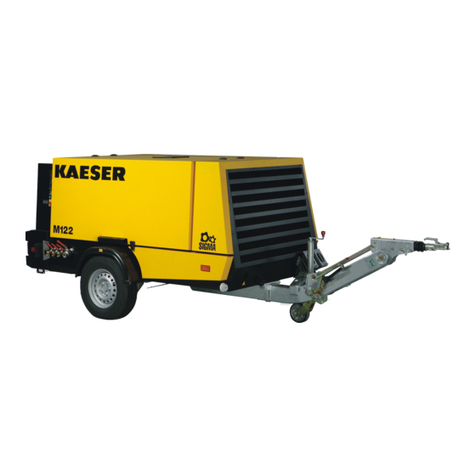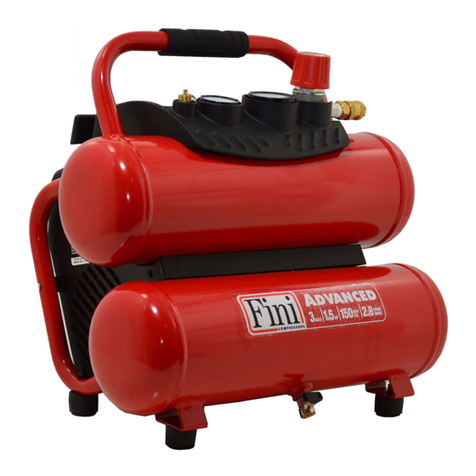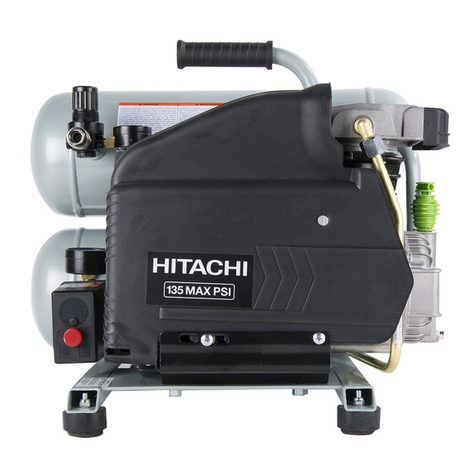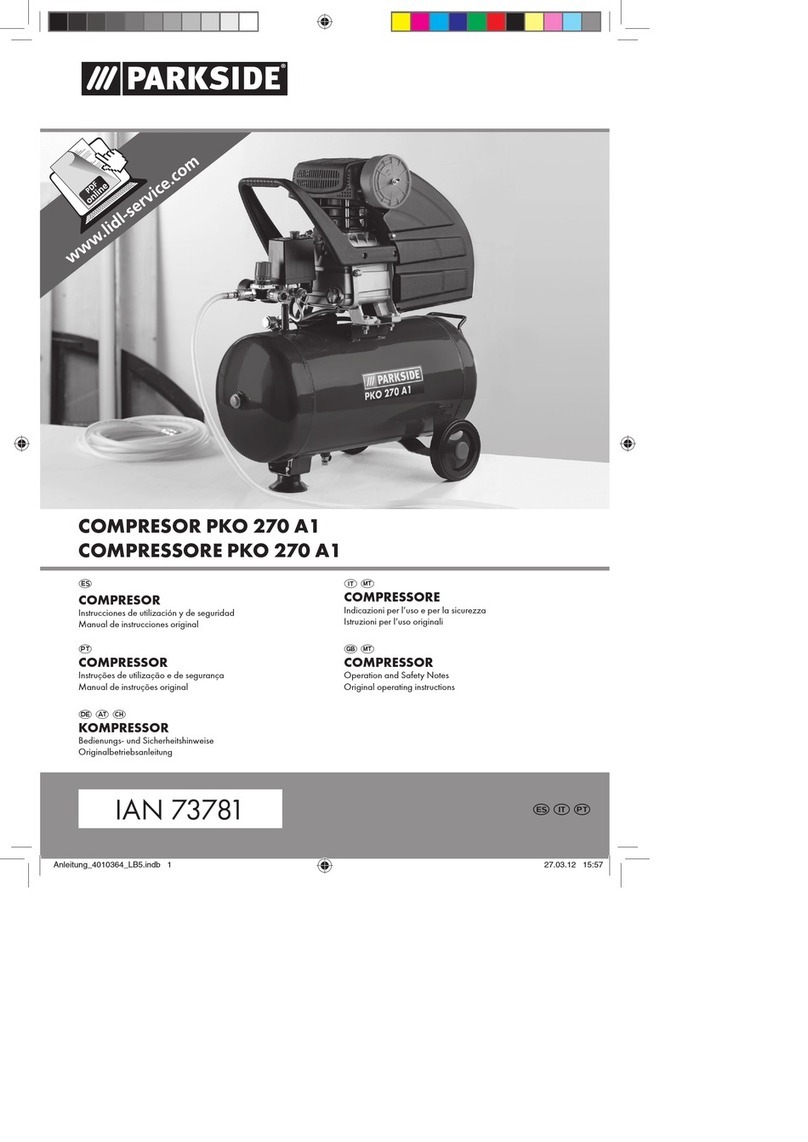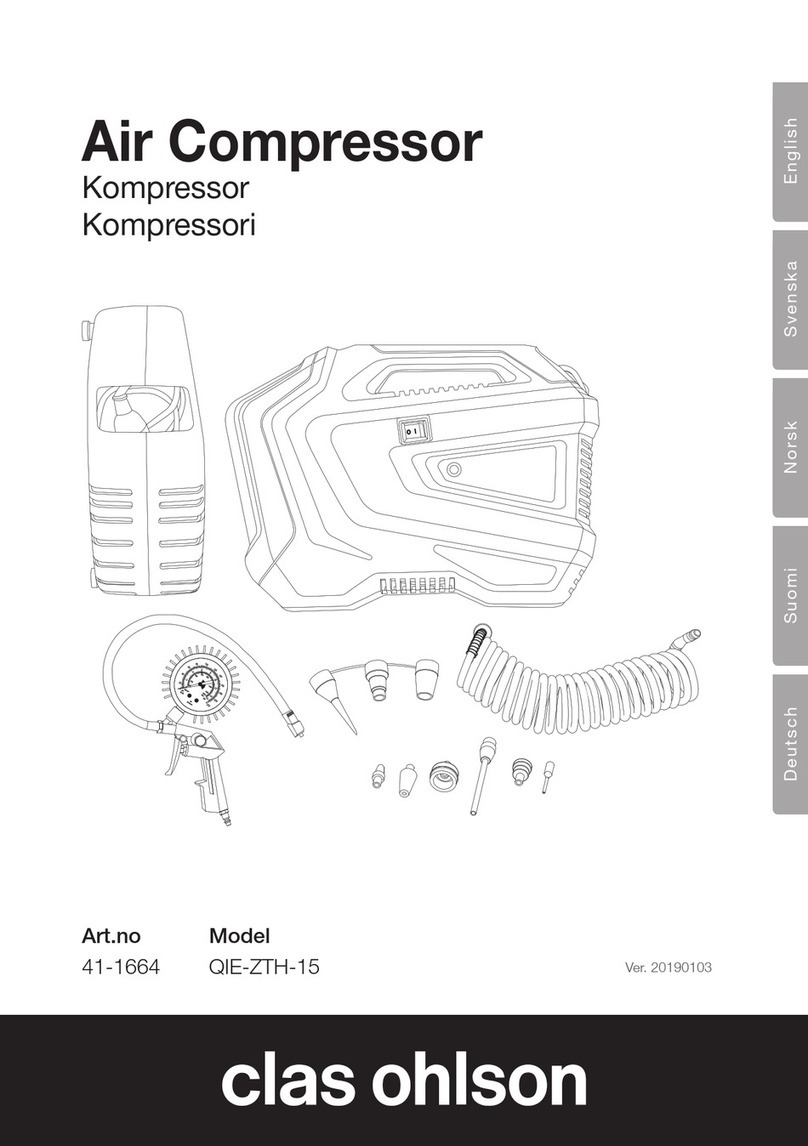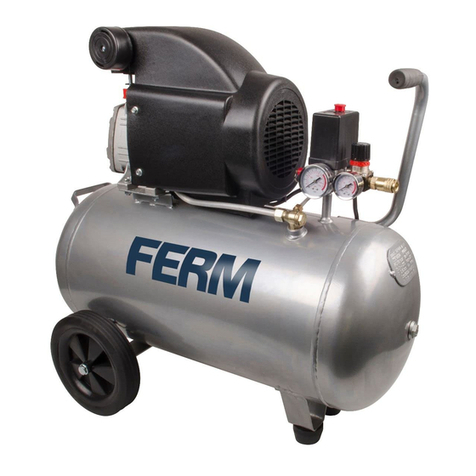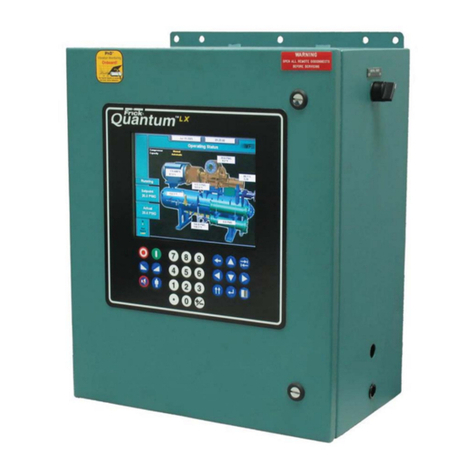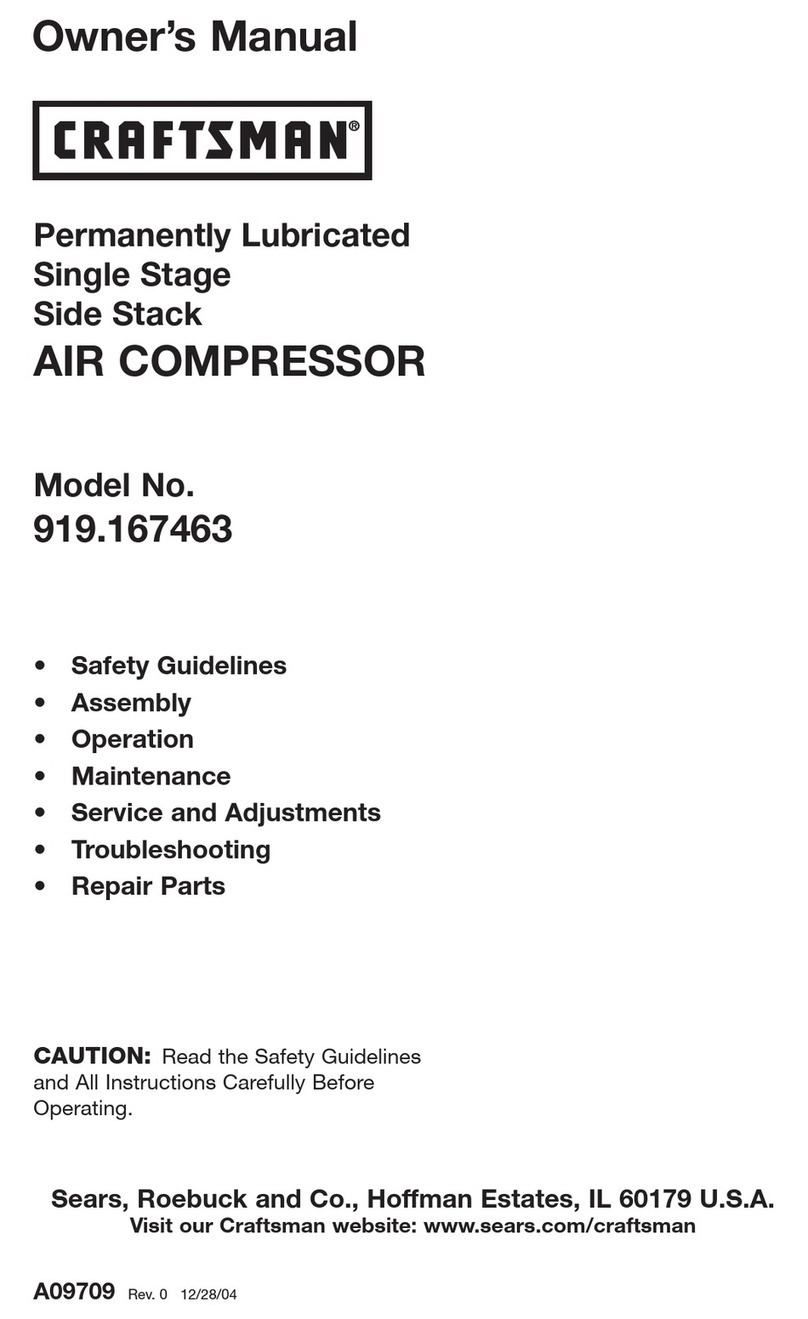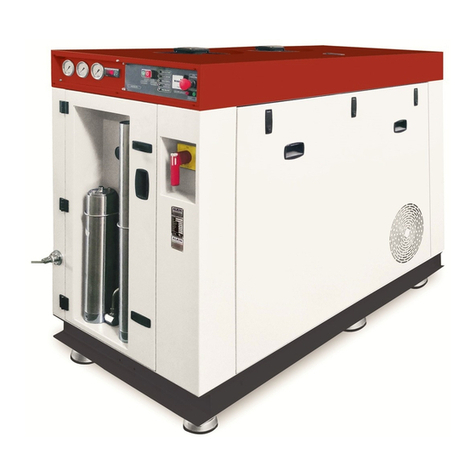
1. SAFETY INSTRUCTIONS
1.1. ELECTRICAL SAFETY
WARNING! It is the responsibility of the owner and the operator to read, understand and comply with the following:
You must check all electrical products, before use, to ensure that they are safe. You must inspect power cables, plugs, sockets and any
other connectors for wear or damage. You must ensure that the risk of electric shock is minimised by the installation of appropriate safety
devices. A Residual Current Circuit Breaker (RCCB) should be incorporated in the main distribution board. We also recommend that a
Residual Current Device (RCD) is used. It is particularly important to use an RCD with portable products that are plugged into a supply
which is not protected by an RCCB. If in any doubt consult a qualified electrician. You may obtain a Residual Current Device by contacting
your Sealey dealer.
You must also read and understand the following instructions concerning electrical safety.
1.1.1. The Electricity at Work Act 1989 requires all portable electrical appliances, if used on business premises, to be tested by a qualified
electrician, using a Portable Appliance Tester (PAT), at least once a year.
1.1.2. The Health & Safety at Work Act 1974 makes owners of electrical appliances responsible for the safe condition of those appliances
and the safety of the appliance operators. If in any doubt about electrical safety, contact a qualified electrician.
1.1.3. Ensure that the insulation on all cables and on the appliance is safe before connecting it to the power supply. See 1.1.1 and 1.1.2 and
use a Portable Appliance Tester.
1.1.4. Ensure that cables are always protected against short circuit and overload.
1.1.5. Regularly inspect power supply cables and plugs for wear or damage and check all connections to ensure
that none is loose.
1.1.6. Important: Ensure that the voltage marked on the appliance matches the power supply to be used and
that the plug is fitted with the correct fuse - see fuse rating at right.
1.1.7. DO NOT pull or carry the appliance by the power cable.
1.1.8. DO NOT pull the plug from the socket by the cable.
1.1.9. DO NOT use worn or damaged cables, plugs or connectors. Immediately have any faulty item repaired or
replaced by a qualified electrician. When an ASTA/BS approved UK 3 pin plug is damaged, cut the cable
just above the plug and dispose of the plug safely.
Fit a new plug according to the following instructions (UK only).
a) Connect the GREEN/YELLOW earth wire to the earth terminal ‘E’.
b) Connect the BROWN live wire to the live terminal ‘L’.
c) Connect the BLUE neutral wire to the neutral terminal ‘N’.
d) After wiring, check that there are no bare wires, that all wires have been correctly connected, that the cable outer
insulation extends beyond the cable restraint and that the restraint is tight.
Double insulated products, which are always marked with this symbol , are fitted with live (brown) and neutral (blue) wires only.
To rewire, connect the wires as indicated above - DO NOT connect either wire to the earth terminal.
1.1.10. Products which require more than 13 amps are supplied without a plug. In this case you must contact a qualified electrician to ensure
that a suitably rated supply is available. We recommend that you discuss the installation of an industrial round pin plug and socket
with your electrician.
1.1.11. If an extension reel is used it should be fully unwound before connection. A reel with an RCD fitted is preferred since any appliance
plugged into it will be protected. The cable core section is important and should be at least 1.5mm², but to be absolutely sure that the
capacity of the reel is suitable for this product and for others which may be used in the other output sockets, we recommend the use
of 2.5mm² section cable. If extension reel is to be used outdoors, ensure it is marked for outdoor use.
1.2. GENERAL SAFETY INSTRUCTIONS
WARNING! Compressor must only be serviced by an authorised agent.
Familiarise yourself with the application and limitations of the compressor.
Ensure the compressor is in good order and condition before use. If in any doubt do not use the unit and contact an electrician/service
agent.
Before moving, or maintaining the compressor ensure it is unplugged from the mains supply and that the air tool is disconnected.
Use the compressor in a well ventilated area and ensure it is placed on a firm surface.
Keep tools and other items away from the compressor when it is in use, and keep area clean and clear of unnecessary items.
Keep children and unauthorised persons away from the working area.
DANGER! DO NOT direct the output jet of air towards people or animals.
WARNING! If an electrical fuse blows, ensure it is replaced with an identical fuse type and rating.
DO NOT disassemble compressor for any reason. This unit must only be checked and serviced by an approved service agent.
DO NOT use the compressor outdoors or in damp or wet locations.
DO NOT operate within the vicinity of flammable liquids, gases or solids.
DO NOT touch compressor cylinder head as it may be hot and will remain so for some time after shutdown.
DO NOT use this compressor to perform a task for which it has not been designed.
DO NOT leave the compressor running unattended.
DO NOT operate the compressor whilst under the influence of drugs, alcohol or other intoxicating medication.
DO NOT cover the compressor or restrict air flow around the machine whilst operating.
DO NOT allow anyone to operate the compressor unless they have received full instructions.
When not in use, store the compressor carefully in a safe, dry, dust free, childproof location.
Thank you for purchasing a Sealey product. Manufactured to a high standard this product will, if used according to these instructions and
properly maintained, give you years of trouble free performance.
IMPORTANT: PLEASE READ THESE INSTRUCTIONS CAREFULLY. NOTE THE SAFE OPERATIONAL REQUIREMENTS, WARNINGS, AND
CAUTIONS. USE THIS PRODUCT CORRECTLY, AND WITH CARE FOR THE PURPOSE FOR WHICH IT IS INTENDED. FAILURE TO DO SO
MAY CAUSE DAMAGE AND/OR PERSONAL INJURY AND WILL INVALIDATE THE WARRANTY.
Original Language Version SAC106B Issue: 3(SP) - 29/11/13
INSTRUCTIONS FOR:
COMPRESSOR 6ltr BELT DRIVE
1.5hp OIL FREE
MODEL No: SAC106B
© Jack Sealey Limited 2013
RECOMMENDED FUSE
RATING: 13AMP
